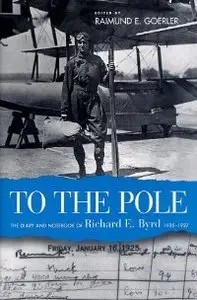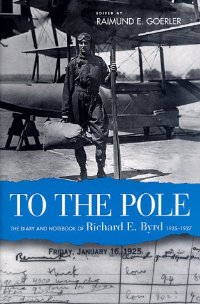Richard Evelyn Byrd , Raimund E Goerler, "To the Pole: The Diary and Notebook of Richard E. Byrd, 1925-1927"
English | ISBN 10: 0814208002 | 1998 | scan PDF | 161 pages | 23 MB
English | ISBN 10: 0814208002 | 1998 | scan PDF | 161 pages | 23 MB
Around the turn of the 20th century, polar exploration became the symbol of national pride and individual worth. Ernest Shackleton, Robert Scott, Roald Amundsen, and Robert Peary, among others, ensured themselves a place in history for their daring assaults on two of the most inhospitable regions on earth: the North and South Poles.
In the course of their explorations, these men pitted themselves against a merciless landscape–Shackleton's ship was crushed in Antarctic ice; Scott and four companions died in a howling blizzard on their way back from the South Pole. If walking to the Poles was difficult, flying there presented its own set of problems. Yet, in 1926 Admiral Richard E. Byrd and his pilot, Floyd Bennett, set out to fly over the North Pole. According to Byrd, they succeeded. In the decades since this feat, a shadow of doubt has crept over Byrd's claim. Critics question whether Byrd could have flown to the Pole and back in the amount of time that actually elapsed between his takeoff and return to Spitsbergen, Greenland; allegations that Byrd's calculations were incorrect bolstered hearsay gossip that Bennett had told another pilot that they'd never reached the Pole.
More than 70 years later, new evidence, in the form of a rediscovered diary of Admiral Byrd, throws fresh fuel on the flames of controversy. Raimund E. Goerler, an archivist at Ohio State University, discovered Byrd's handwritten account of the flight in 1996, but rather than laying all doubt to rest once and for all, the diary only serves to further muddy the waters. There are, for example, the suspicious erasures of calculations–innocent errors or a deliberate attempt to fudge the data? In To the Pole, Goerler offers up both Byrd's journal and the opinions of experts on both sides of the controversy in this evenhanded treatment of a historical puzzle.



